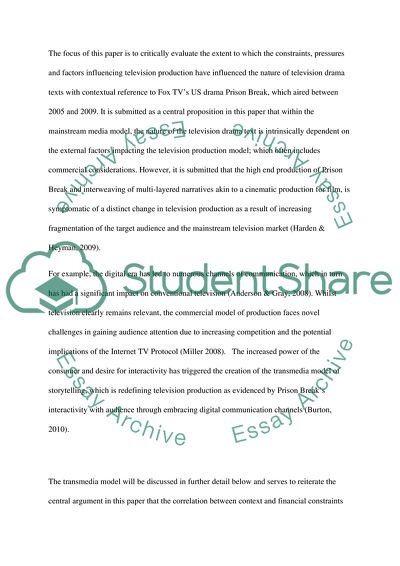Cite this document
(The Contexts, Pressures, and Constraints of Television Production Assignment, n.d.)
The Contexts, Pressures, and Constraints of Television Production Assignment. https://studentshare.org/media/1747173-the-contexts-pressures-and-constraints-of-television-production-have-changed-hugely-during-the-last-four-decades-these-changes-inevitably-change-the-nature-of-television-drama-texts
The Contexts, Pressures, and Constraints of Television Production Assignment. https://studentshare.org/media/1747173-the-contexts-pressures-and-constraints-of-television-production-have-changed-hugely-during-the-last-four-decades-these-changes-inevitably-change-the-nature-of-television-drama-texts
(The Contexts, Pressures, and Constraints of Television Production Assignment)
The Contexts, Pressures, and Constraints of Television Production Assignment. https://studentshare.org/media/1747173-the-contexts-pressures-and-constraints-of-television-production-have-changed-hugely-during-the-last-four-decades-these-changes-inevitably-change-the-nature-of-television-drama-texts.
The Contexts, Pressures, and Constraints of Television Production Assignment. https://studentshare.org/media/1747173-the-contexts-pressures-and-constraints-of-television-production-have-changed-hugely-during-the-last-four-decades-these-changes-inevitably-change-the-nature-of-television-drama-texts.
“The Contexts, Pressures, and Constraints of Television Production Assignment”. https://studentshare.org/media/1747173-the-contexts-pressures-and-constraints-of-television-production-have-changed-hugely-during-the-last-four-decades-these-changes-inevitably-change-the-nature-of-television-drama-texts.


